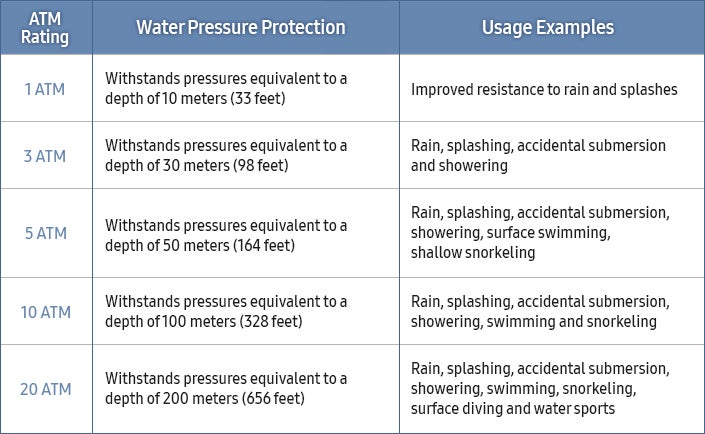If you’ve been shopping for a new watch – smart or traditional – you may have come across the term ‘ATM’.
In the world of smartwatches and fitness trackers, ATM doesn’t mean ‘at the moment’ and it has nothing to do with your bank. Rather, ATM is an abbreviation for ‘atmosphere’. But, what does this have to do with watches?
Keep reading to learn everything you need to know about ATM water resistance, including what the numbers mean and how the system differs from IP ratings.
What is ATM water resistance?
ATM is a standard commonly used to measure the water resistance of watches, including smartwatches, fitness trackers and traditional watches.
An abbreviated version of the word ‘atmosphere’, ATM describes the amount of pressure a device can withstand when placed underwater.
Like the IP ratings assigned to measure the protection afforded to devices like smartphones and speakers, ATM ratings use numbers to convey water resistance. Common ratings include 1 ATM, 3 ATM and 5 ATM, with higher numbers used to represent devices that are capable of withstanding greater amounts of pressure.
One atmosphere of pressure (1 ATM) is equal to 10m (33ft) in depth, while 3 ATM equals 30m (98 ft) in depth. 5 ATM, meanwhile, represents an ability to withstand 50m (164ft) of pressure.
If you’re looking for a watch that can be taken swimming or snorkelling, you’ll want to look out for a rating of 10 ATM or 20 ATM, with 10 ATM equalling 100m (328ft) of depth and 20 ATM signalling 200m (656ft) of depth.
The official criteria and test conditions for each ATM standard are determined by the International Organisation for Standardisation in ISO 22810. You can also check out Samsung’s summary of each classification below:


What is the difference between ATM and an IP rating?
If you’ve ever looked into the water resistance of a smartphone or pair of earbuds, you may be familiar with the term ‘IP’. Plenty of flagship phones carry an IP rating of IP68 these days, for example.
So, what is the difference between IP and ATM?
Like ATM, an IP rating is a way of classifying exactly how water resistant a device is. IP stands for Ingress Protection.
An IP rating is divided into two numbers – the first refers to how protected that device is against solid objects (like dust and dirt), while the second number looks at how well the device can withstand liquids (like water and sweat).
This might lead you to believe that IP ratings are the same as ATM classifications with the addition of solids. However, this isn’t true at all.
IP ratings don’t really account for water pressure, which is why an ATM rating is a better way to determine whether a device is safe to take swimming, snorkelling or diving.
This is also why you’re more likely to see the term ATM on the spec sheet of a smartwatch or fitness tracker than you are something not designed to withstand large amounts of water pressure, like a smartphone.



